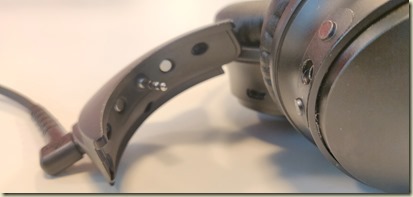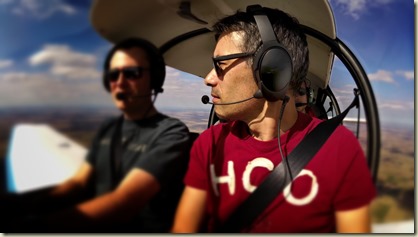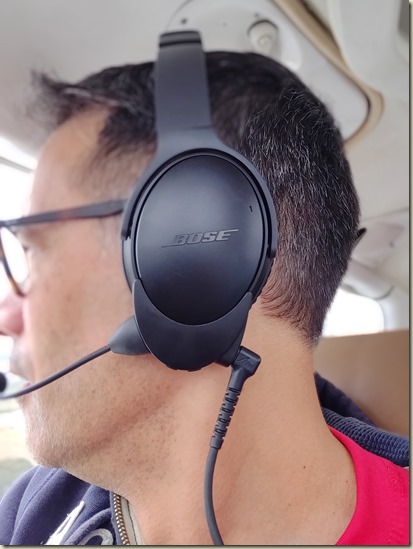La version française de ce post est à lire ici.
Important update 28 october 2018 : there are issue with Garmin GNC255 radio. Encountered it during a short flight with DR400 + Garmin GNC255. I called it “Larsen or Feedback effect”. See this video. Avee has solved the issue with a new electronic available after mid November’18.
Yes we know about this problem for some months and have already taken steps to get rid of it.
It is in fact not the Larsen effect (or what we call a feedback) , but high frequency noise from the transceiver being emitted into the avee.
We have seen this problem on the Garmin , a few Becker installed in wooden planes (Robin) and especially with handheld handsets
Anyway;: we have completely solved his issue and this redesigned electronics inside the Avee to handle it.
The updated version works like a breeze – and we would for sure like you to confirm this.
The new circuit boards are in production now and will be finalized around November 7th.
Why can’t I upgrade my regular ANR audio headset into an ANR(1) aviation headset ? Never ask the question yourself when looking at your Bose QC25 or QC35 ? Several solutions(2) are on the market. I choose to test the Norwegian Avee(3) solution.
Background
It’s not new but I have the feeling that my pilot bag is heavier and heavier. I stopped paper charts. So, I carry batteries and tablet. Regarding headset, for 2 years, I exclusively fly with an ANR wireless headset (LightSpeed Tango) in France and US. I also have in my every-day backpack a
Bose QC35 that I use in business open-spaces and in liners.
How does it look like ?
 The microphone add-on is attached to the left earcup of the Bose and a wire goes from the Avee device to the regular GA MIC/Audio connector in the plane.
The microphone add-on is attached to the left earcup of the Bose and a wire goes from the Avee device to the regular GA MIC/Audio connector in the plane.The
Avee kit transforms a Bose ANR audio-only (like the QC25 or QC35 available everywhere) into an aviation headset with MIC/Audio connectors and a mic boom… to talk… into.
 The Bose QC35 with the Avee connector, the mic boom (165mm) and the wire (125cm), ready to get plug into the plane.
The Bose QC35 with the Avee connector, the mic boom (165mm) and the wire (125cm), ready to get plug into the plane.
The Avee small device before getting clipped into the QC35. A small adhesive and magnetic strips make the plug stronger. The strip stays on your Bose.
Nice tip&trick to have a white point indicator to remind you where is the side of the mic.So, how is it in real situation ?
 The microphone add-on connect to the left earphone of the Bose QC35. I choose a 165 mm (long version) microphone boom. There’s a shorter version available when selecting your kit (145mm).
The microphone add-on connect to the left earphone of the Bose QC35. I choose a 165 mm (long version) microphone boom. There’s a shorter version available when selecting your kit (145mm). Once connected, the look & feel is pretty good.
It’s eventless to plug the microphone add-on in the Bose. Just do-it in less than 2 seconds. Then, you plug the wire which goes to the MIC/Audio connectors of your plane. I choose a 125 cm length. There’s also a 165 cm or 200 cm version.
 USB-C connector for the MIC/Audio cable into the microphone add-on connected to the Bose.
USB-C connector for the MIC/Audio cable into the microphone add-on connected to the Bose.
It’s a USB-C type connected rearward to avoid it gets unplugged inadvertently. At first look, the microphone boom seems fragile. But after my real test flight, not only the microphone stays where you put it but the lightweight is pretty much welcome. Check
the video.

Once ready… everything plugged… I start the French classic Robin DR400 (180 hp) for an almost 3 hours flight during a hot afternoon Sunday of September.
The first few minutes, after the startup, really disappointed me… What’s wrong ? ANR seems ineffective… then I figured out I forgot to switch ON the Bose ! Once ON, it’s night and day. I really have the feeling to wear my LightSpeed Zulu or Tango. With my own ears (yes) and in this exact circumstances, I’m unable to feel the difference between the Bose QC35 ANR and the LightSpeed ANR. The headset seems even lightweight on my head.
And for those wondering : “Yes, with the ANR Bose you still can hear the stall warning horn”. Not to mention, you still have a still hear understanding of the Lycoming power setting changes.
Regarding the microphone, everything works perfectly from start to end. My passengers hear me without any problem as well as Toussus ground, tower, Chevreuse Information sector and the different French SIV we get into. I didn’t have any glitch or unexpected microphone unmute.
 Setting the output volume with the + and – switches from the Avee devices.
Setting the output volume with the + and – switches from the Avee devices.It’s easy to set the output volume with + or – switches. It worked as expected. I love that. The factory settings works great regarding the mic input level. I didn’t need to change it.
I totally forgot about he Bose+Avee solution after several minutes. Even the microphone boom, that I initially suspected to be fragile (the mic will stay in place ?) was fine. I didn’t need to shout in the mic and the squelch was perfectly set in this plane. I didn’t need to have the microphone windsock too close from my lips. Lucky ?
We left Toussus-le-Noble (LFPN), flew over several French castles on the Loire, encountered lots of turbulences (warm afternoon) and finally get into the Tour – Sorigny (LFEN) circuits in Unicom. And the flight back.
After almost 3 hours flight, I’m really impressed.
Autonomy
The
Avee microphone add-on doesn’t need any electric power (except for the LED ON/OFF). So, no extra battery to load. But as you have an ANR solution, this required that the Bose QC35 gets power.
I have already use my Bose QC35 on Europe to US west coast in liner. A mix or Bluetooth and direct cable connection to the IFE system of the liner. I have no problem on 10 hours (and more) flights.
In case of you loose all Bose battery power, the microphone will still continue to work as well as passive reception. You’ll still can hear intercom and ATC communication. You just loose the ANR feature. Please consider that the QC35 is a poor passive solution (as well as the LightSpeed Tango for example). By the way, this battery OFF situation was exactly what I did involuntary during the first few minutes of my test flight. And ground+tower got me without any problem.
 Battery at 100% even after my 3 hours flight ! Unbelievable.
Battery at 100% even after my 3 hours flight ! Unbelievable.Remark : I’m still wondering why I had 100% battery available after my 3 hours flight. Avee support reminded me that the most battery consuming feature is the Bluetooth. Bose specs gives 20 hours on Bluetooth and 40 hours cable-connected. Ok, fair enough. Don’t create problem were there’s none. 

My 2016 Bose QC35 version 1 (mark 1) was in 1.5.1 firmware version
and ANR feature are on “High”.Let’s talk money
High end ANR aviation headsets cost around 1000 euros, like the LightSpeed Zulu or the Bose A20. A mid range ANR should be available between 600 and 700€, for e.g the LightSpeed Sierra. Regarding audio only, a Bose QC25 cost a little less than 300€ in your favorite retailer. A Bose QC35 cost around 350€. The
Avee kit costs 215€ (+ tax and shipment between 11 and 35€).
Finally, you have a complete solution for 550 to 600 euros (+ tax). And I’m sure you can find a sales or special discount on Bose QC25/35… or a second hand.
For who ?
You have a passive aviation headset ? You are interested in buying an audio ANR headset ? So, the Bose QC25/35 + Avee is the solution you have to consider.
If you already have a ANR aviation headset and you fly often, if I were you I would hesitate. The durability is a question. But maybe you want a second ANR headset and give your current one to your fellow copilots or passengers ?
And finally, several of you are not yet convinced by ANR. Or maybe you dislike the Bose sound. But if you are in the middle “why shouldn’t try it”, the Avee kit is a great option to evaluate. A version for the Sony WH-1000XM3 is on its way. Don’t forget, you have two usages for the (almost) same price.
Is it an universal solution ?
Of course, not. We all have different ears and head. A great solution for one is not automatically a good one for another. In this blog post, you found my very own experience. For example, I’m not compatible with in-ears solution like the famous Clarity. I fly ANR for 10 years now (LightSpeed Zulu, Tango, Sierra) and before 5 more years with passive solution. I love my Bose ANR sound. And I fly small GA club aircrafts : Robin DR400, Cessna 172, Piper PA28 and Cirrus.
As well, shall I remind you that I’m not a professional tester nor a journalist ? And finally, I only test one solution.
Conclusion, the pro’s and con’s
(+)
- Easy to carry : the QC35 + the small kit are small volume & lightweight. Less big than many ANR aviation headsets.
- Quality : the ANR quality comes from Bose. OK. But the microphone quality is directly a Avee choice on quality components.
- Autonomy : 100% battery after 3 hours of flight !
- Comfort : the QC35 is lightweight as well as the Avee kit. Too bad, that there’s a cable ;)
- Cost : mostly if you have already a Bose QC25/35, the solution is not expensive to have a great ANR aviation headset. The complete solution cost around 600 euros. And for the price, you have an audio AND an aviation ANR headset. One budget, two usages.
(-)
- The risk to get unplugged x 2 : the microphone add-on and the cable from the add-on to the plane (MIC/Audio)
- Fragile ? On a long term period, I’ll have to monitor the overall quality of the microphone boom and the add-on itself.
- “There’s a cable”. For two years now, I fly with a wireless headset. And you get use to !
- The small carrying bag is missing in the package.
- Bluetooth is not yet available (for those who think it’s useful). As soon as you plug something in the QC35, the Bose Bluetooth is de-activated.Let’s wait for the next version from Avee.


In conclusion, you got it : I’m convinced by the Avee solution. My Bose QC35 is now part of my aviation bag. Maybe will I use my LightSpeed for long trip or Farwest ? Hum… after all, maybe not. The Bose QC35 ANR works very well in our club airplanes. The complete solution is carry-easy, more than any of my previous headset. It’s a great find. Thanks to the
Norwegian Avee !
Footnotes
(1) Active Noise Reduction : QuietComfort 35 headphones II utilize both active and passive noise reduction technologies. They use a sophisticated proprietary electronics approach to active noise reduction, placing microphones both inside and outside the earcups. The electronics system senses the sound in almost any environment and then measures, compares and reacts—instant by instant—to produce an opposing cancellation signal. The passive noise reduction is achieved by the combination of the acoustic design and materials chosen for the earcups and cushions.
(2) UFlyMike, Klipper Mike, NFlightMic, AvMike to name a few. (3) Avee gracefully borrow me their kit
